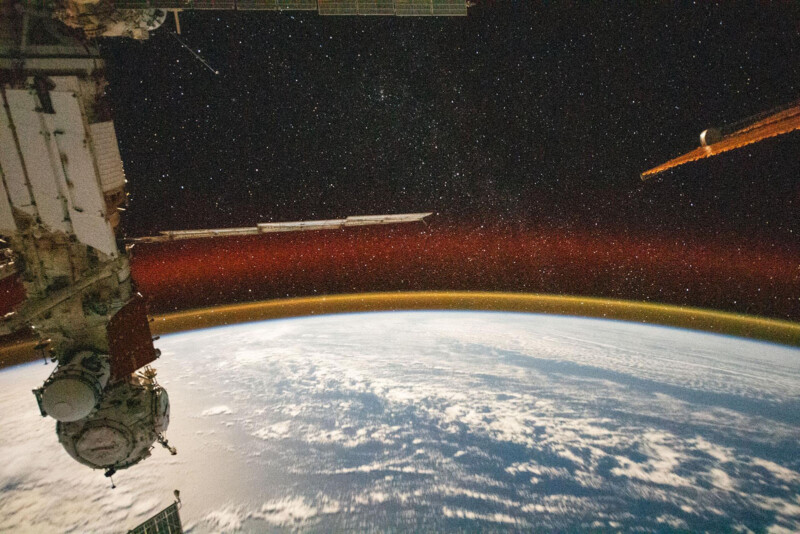The ISS Captures Earth Glowing Golden in Magnificent Photo
![]()
Photographers are often inspired to shoot during the “golden hour”, but the International Space Station (ISS) has just snapped a photo that takes “golden” to a whole new level.
While traveling 258 miles above the Pacific Ocean northeast of Papua New Guinea on January 21, the ISS encountered a stunning view of Earth’s atmosphere glowing golden with a starry night sky backdrop.
The one-second exposure taken on a Nikon D5 is capturing a phenomenon called airglow which occurs when sunlight interacts with atoms and molecules within Earth’s atmosphere causing them to emit light to shed their excess energy.
“Or it can happen when atoms and molecules that have been ionized by sunlight with and capture a free electron. In both cases, they eject a particle of light — called a photon — in order to relax again,” explains NASA.

The ISS orbits Earth roughly every 90 minutes taking in 16 sunrises and sunsets in just one day. Airglow is a sensation best seen at night which is why the camera was set to a moderately long exposure of one second.
The photo captures a firm golden band of airglow perfectly aligned to the Earth’s curvature with a hazier band above it. The whispy clouds above the Pacific Ocean can be seen as well as the ISS’s arms including the Prichal docking module and the Nauka multipurpose laboratory module, which both belong to Russia’s space agency Roscosmos.
In July last year, PetaPixel covered Colorado-based photographer Aaron Watson for his incredible photo of vibrant green streaks in the night sky that look like aurora lights but is actually airglow.
“[Airglow] is similar to auroras, but where auroras are driven by high-energy particles originating from the solar wind, airglow is energized by ordinary, day-to-day solar radiation,” says NASA.
Spaceweather notes that while airglow and auroral activity are separate, increased solar activity is boosting airglow. Spaceweather explains that any photographer in a dark enough area can pick up faint airglow, although the airglow Watson saw is especially dramatic.
Image credits: NASA